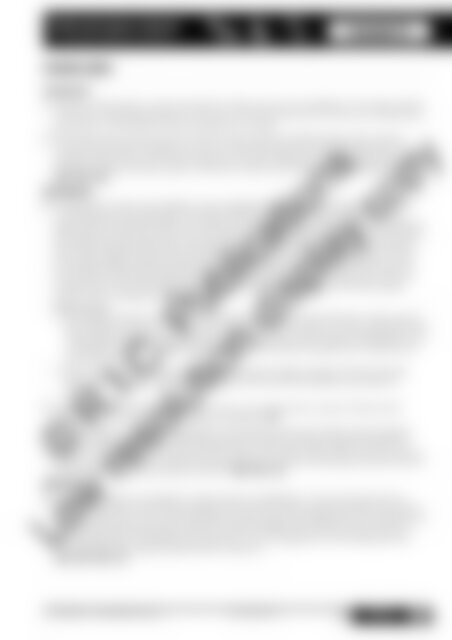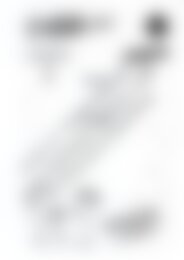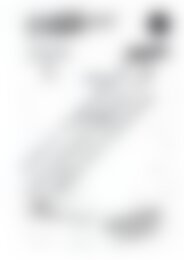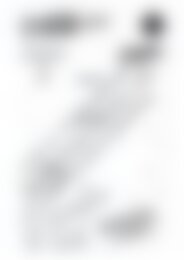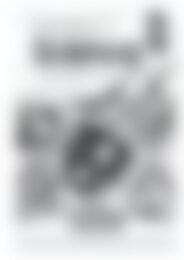6172RB Science a STEM approach Year 2 low res watermark
You also want an ePaper? Increase the reach of your titles
YUMPU automatically turns print PDFs into web optimized ePapers that Google loves.
Earth and space sciences<br />
OUR RESOURCEFUL WORLD<br />
Lesson 5<br />
Lesson plan<br />
Introduction:<br />
1. View the online video Is mining important? at . This video explains<br />
the knock-on effect that would occur if we did not mine minerals, such as the lack of infrastructure,<br />
agriculture or transportation which rely heavily on minerals.<br />
2. Ask students Can humans meet their needs for food, water and shelter without steel, cement,<br />
concrete and fertiliser? Students move to one side of the classroom if they answered yes to the<br />
question and the other side if they answered no. Students share their reasoning with others who<br />
answered similarly. Ask each group to share their reasons with these who had a different opinion.<br />
QP PC PA<br />
Development:<br />
3. Individually or in pairs, give students a copy of pages 94 and 95. Students read the information<br />
on page 94 about how Aboriginal and Tor<strong>res</strong> Strait Islander people met each need for food,<br />
water, shelter and tools and then use a QR scanner to watch a video related to that need. Students<br />
think about the information they have read, seen and heard to identify how Aboriginal and Tor<strong>res</strong><br />
Strait Islander people used water, minerals and rocks, plants and animals to meet their need for<br />
food, water, shelter and tools. Students add information to the worksheet on page 95 to answer<br />
the questions What did Aboriginal and Tor<strong>res</strong> Strait Islander people use each of these <strong>res</strong>ources<br />
for? and How did Aboriginal and Tor<strong>res</strong> Strait Islander people source and collect each <strong>res</strong>ource?<br />
Students then scan another QR code to see how Aboriginal and Tor<strong>res</strong> Strait Islander people<br />
source ochre to make paint. PC PA C<br />
Differentiation<br />
• Less capable students may have the information read and discussed with them. They may also<br />
draw images on a piece of paper to show each type of Earth’s <strong>res</strong>ource and how Aboriginal and<br />
Tor<strong>res</strong> Strait Islander people used each <strong>res</strong>ource. Students can then create a p<strong>res</strong>entation, such<br />
as ShowMe, to explain how Aboriginal and Tor<strong>res</strong> Strait Islander people found, collected and<br />
used each <strong>res</strong>ource.<br />
• More capable students may be encouraged to draw and label examples of food and water<br />
sources, shelters and tools used by Aboriginal and Tor<strong>res</strong> Strait Islanders on the back of<br />
page 95.<br />
4. Students partner up with another student or pair, and compare their answers. Students add<br />
information to, or correct their information as required. E<br />
5. As a class, use an online mind-mapping tool, such as the one found at to collate answers about how Aboriginal and Tor<strong>res</strong> Strait Islander people used Earth’s<br />
<strong>res</strong>ources including water, minerals and rocks, plants, and animals. Note: Other <strong>res</strong>ources such as<br />
the sun, air and soil may be included, al<strong>low</strong>ing students to predict how Aboriginal and Tor<strong>res</strong> Strait<br />
Islander people used each <strong>res</strong>ource to survive. QP PA C<br />
Reflection:<br />
6. View the video We are caretakers at . Use a think-pair-share to<br />
discuss the questions How did Aboriginal and Tor<strong>res</strong> Strait Islander people look after the land that<br />
provided them with so many <strong>res</strong>ources? Which practices have we adopted from the way Aboriginal<br />
and Tor<strong>res</strong> Strait Islander people cared for the land? and What other practices do you think we<br />
should adopt? Note: See Background information for some suggestions of how Aboriginal and<br />
Tor<strong>res</strong> Strait Islander people cared for Earth’s <strong>res</strong>ources.<br />
QP PC PA C<br />
© R.I.C. Publications<br />
Low <strong>res</strong>olution display copy<br />
R.I.C. Publications® – www.ricpublications.com.au 978-1-925431-95-7 YEAR <strong>Science</strong>:<br />
2 A <strong>STEM</strong> APPROACH 93


